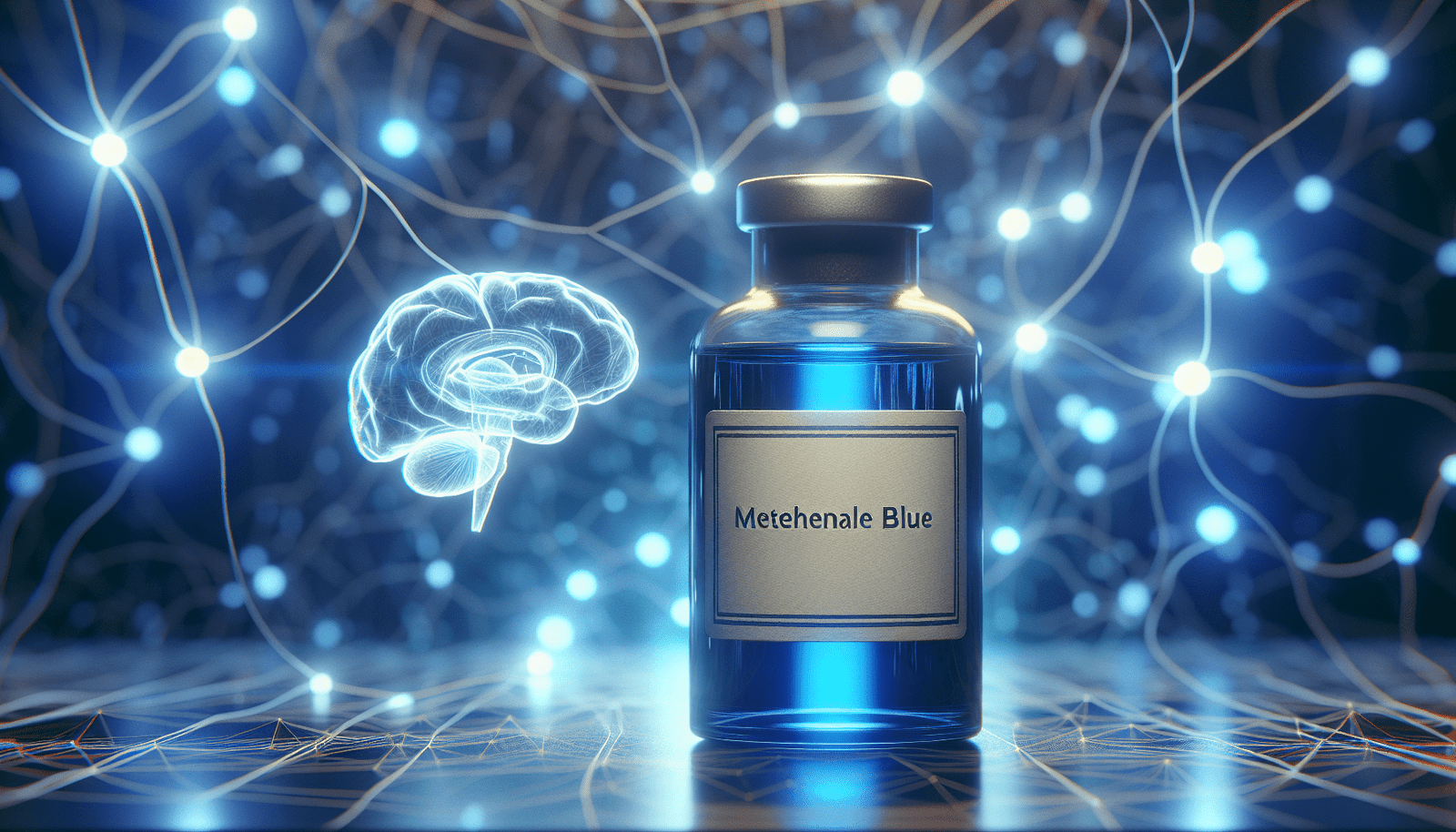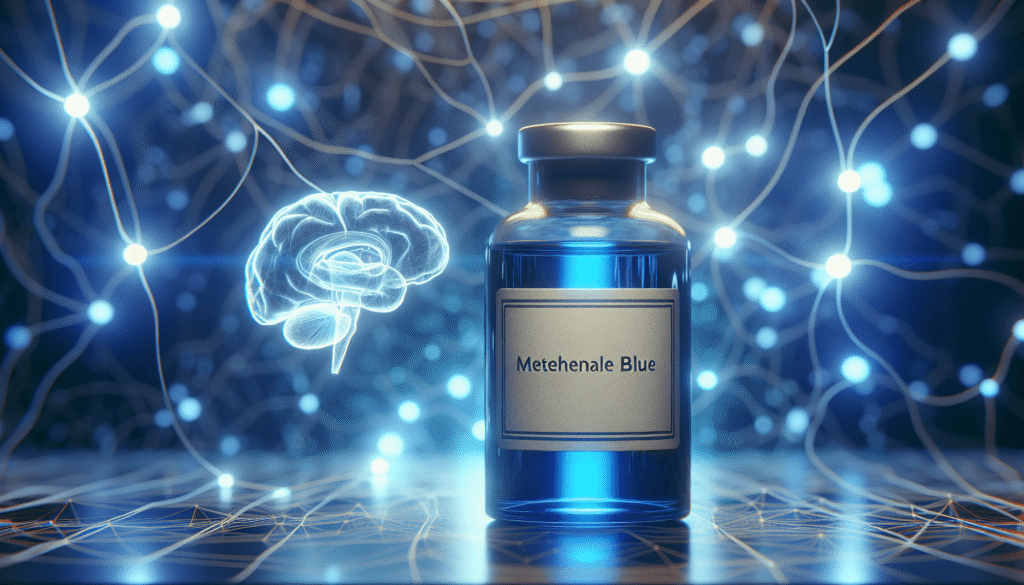
Have you ever wondered how certain compounds can influence your brain chemistry and overall mental health? One such compound that has garnered attention in recent years is Methylene Blue. This article will take a closer look at Methylene Blue, particularly its relationship with dopamine, a crucial neurotransmitter that plays a vital role in regulating mood, attention, and motivation.
Understanding Methylene Blue
Methylene Blue is an organic compound with various applications, ranging from medical uses to scientific research. Originally developed as a dye in the 19th century, it has since found utility in several therapeutic areas, including treatment for methemoglobinemia, a condition where hemoglobin is unable to properly release oxygen to tissues.
Historical Background
While its history dates back quite a distance, the understanding of Methylene Blue’s pharmacological properties has evolved significantly. In the late 1800s, it was introduced as one of the first synthetic dyes, but its medicinal properties weren’t fully appreciated until the 20th century. Researchers have since investigated its role in mitochondrial function and neuroprotection.
The Chemistry of Methylene Blue
The molecular structure of Methylene Blue consists of a phenothiazine derivative, which can easily lose and gain electrons. This property allows it to act as a redox agent, enabling it to donate or accept electrons in biochemical pathways.
Pharmacokinetics
Understanding how Methylene Blue interacts within the body is pivotal. Once administered, it is rapidly absorbed and reaches peak plasma concentrations within a couple of hours. The compound is metabolized primarily in the liver, and its effects can last several hours.
Mechanism of Action
Methylene Blue’s action is multifaceted. It promotes mitochondrial function by enhancing ATP production, which is crucial for cellular energy. It also serves as a potent antioxidant, neutralizing free radicals, which can diminish oxidative stress—a significant contributor to various mental health disorders.

The Role of Dopamine in the Brain
Dopamine is often referred to as the “feel-good” neurotransmitter due to its association with pleasure and reward. However, its functions extend beyond mere enjoyment; it regulates motor control, motivation, and numerous cognitive processes.
Dopamine Pathways
Several pathways in the brain are primarily controlled by dopamine, including the mesolimbic pathway, which is heavily involved in rewarding experiences and emotional responses. Understanding these pathways can shed light on how Methylene Blue might impact dopamine modulation.
| Pathway | Function |
|---|---|
| Mesolimbic Pathway | Reward, pleasure, and motivation |
| Nigrostriatal Pathway | Movement control |
| Tuberoinfundibular Pathway | Hormonal regulation |
Influence of Dopamine on Mental Health
Dysregulation of dopamine levels has been linked to various psychiatric disorders, including depression, schizophrenia, and attention-deficit/hyperactivity disorder (ADHD). Consequently, effective management of dopamine levels is crucial for therapeutic interventions.
Methylene Blue and Dopamine: A Synergistic Relationship
The interaction between Methylene Blue and dopamine is an area of research that has garnered significant attention. Methylene Blue is believed to influence dopamine levels positively, enhancing its availability and functionality within the brain.
Modulation of Dopaminergic Activity
Research suggests that Methylene Blue can enhance dopamine signaling. It serves as a monoamine oxidase (MAO) inhibitor, leading to increased availability of dopamine by preventing its breakdown. This action correlates with potential therapeutic effects for mood disorders and neurodegenerative diseases.
Clinical Studies and Findings
Several studies have investigated Methylene Blue’s effects on dopamine levels:
-
Parkinson’s Disease: Clinical trials have shown that Methylene Blue can slow the progression of Parkinson’s disease by enhancing mitochondrial function and dopamine production.
-
Depression: Preliminary studies suggest that Methylene Blue may alleviate depressive symptoms by improving dopamine activity in the brain.
-
Cognitive Enhancement: Some research indicates that Methylene Blue could potentially enhance cognitive functions related to dopamine, such as memory and learning.

Practical Applications of Methylene Blue
The relationship between Methylene Blue and dopamine has led to various practical applications. Understanding these can provide insight into how Methylene Blue may serve as a therapeutic agent.
Treatment for Neurological Disorders
Given its neuroprotective properties, Methylene Blue has been evaluated for treating several neurological conditions, including Alzheimer’s disease, traumatic brain injury, and other forms of dementia. Its ability to stabilize mitochondrial function may prove invaluable in these contexts.
Applications in Psychiatry
As a potential adjunct treatment for mood disorders, Methylene Blue could complement existing therapies, particularly in cases where traditional medications do not yield satisfactory results. Its role as a MAO inhibitor can be especially beneficial.
Safety and Side Effects
While Methylene Blue shows promise for enhancing dopamine signaling, it is essential to consider safety and side effects.
Common Side Effects
Some individuals may experience side effects, including but not limited to:
- Nausea and vomiting
- Headaches
- Anxiety or restlessness
Contraindications and Precautions
Methylene Blue can interact with other medications, particularly those that affect serotonin or dopamine levels. Users should exercise caution if they are on antidepressants or other psychiatric medications.
| Interaction | Medication | Risk |
|---|---|---|
| Serotonin Syndrome | Selective Serotonin Reuptake Inhibitors (SSRIs) | Risk of overstimulation |
| Hypertensive Crisis | Monoamine Oxidase Inhibitors (MAOIs) | Significant increase in blood pressure |
The Future of Methylene Blue Research
As research continues, the potential uses of Methylene Blue may expand. Investigating its role in enhancing dopamine levels could lead to breakthroughs in treating various conditions.
Ongoing Research
Several studies are currently underway to understand Methylene Blue’s efficacy further. Areas of focus include:
- Its impact on neurodegenerative diseases
- Long-term safety profiles
- Mechanisms behind its neuroprotective properties
Potential for Combination Therapies
One exciting area of inquiry is the potential for Methylene Blue to be used in combination with other therapies. By understanding its interactions with various drugs, novel treatment protocols could be developed for a range of mental health conditions.
Conclusion
Understanding the relationship between Methylene Blue and dopamine offers insight into the intricate workings of our brain and the potential for novel therapeutic interventions. As you consider the implications of this relationship, it becomes clear that Methylene Blue is not merely a historical artifact but a compound worthy of contemporary scientific discussion. The ongoing research promises to illuminate new pathways for mental health treatment, offering hope for many suffering from dopamine dysregulation and related disorders. With caution and further study, Methylene Blue could prove a valuable tool in the therapeutic arsenal for treating numerous neurological and psychiatric conditions, ultimately enhancing quality of life for those affected.